The Arab region is not on track to achieve SDG 2, losing ground on targets related to undernourishment and food insecurity, obesity among children and investment in agriculture. While most Arab countries have reoriented their SDG 2 policies over the past decade, making positive shifts towards fiscal, economic and environmental sustainability, policy and implementation gaps persist. People living in pockets of poverty and conflict are paying the highest price, with notable impacts on the health of the most vulnerable, including women and children. Moreover, food security policies have been ineffective at shielding countries from general global shocks and overlapping crises, emphasizing the need to build resilient food systems that capitalize on national and regional capacities.
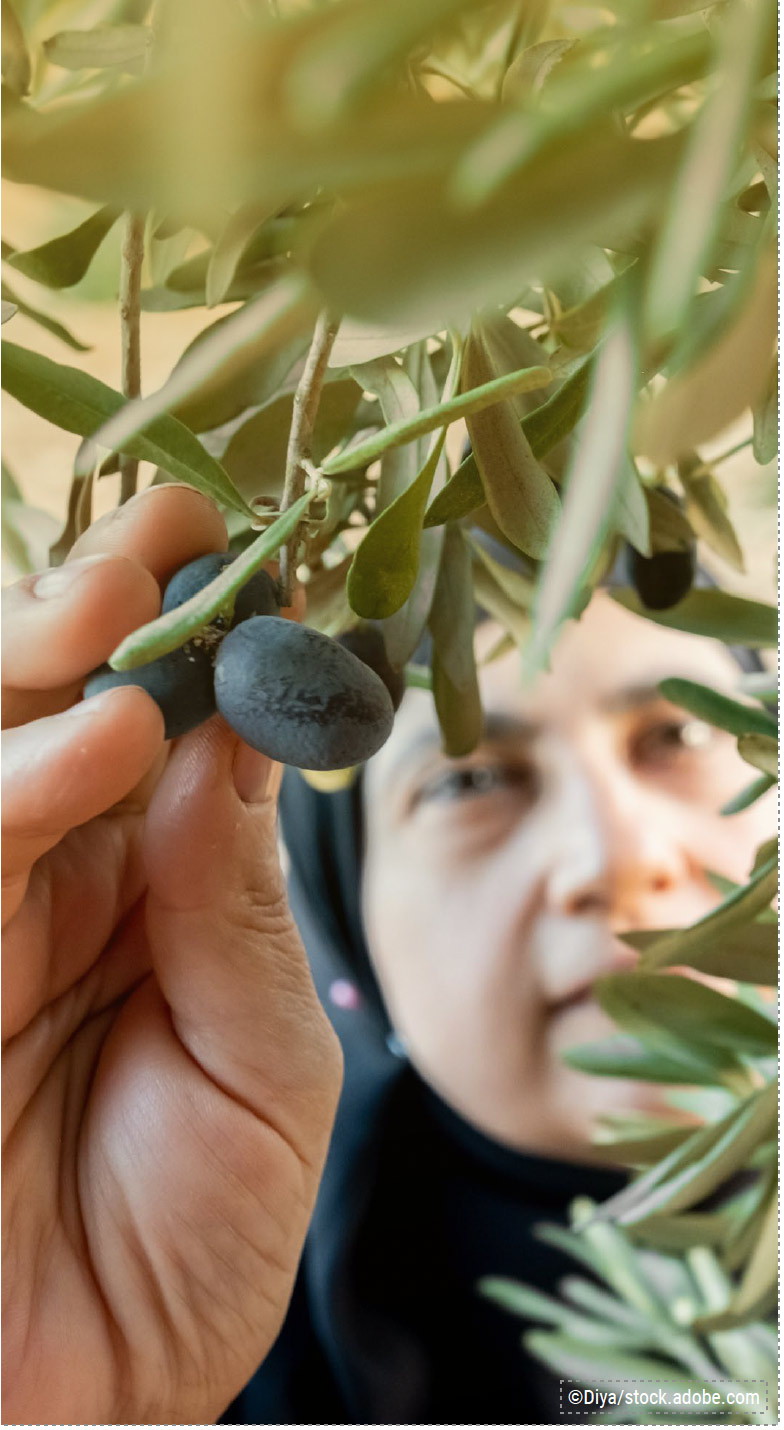

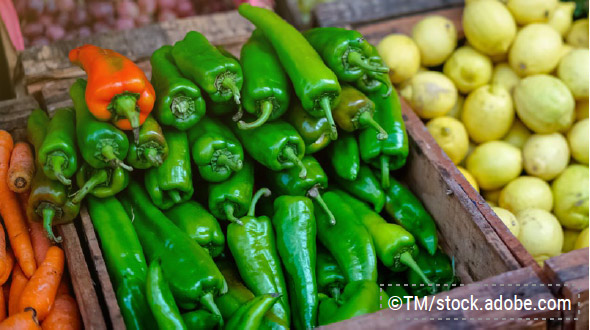

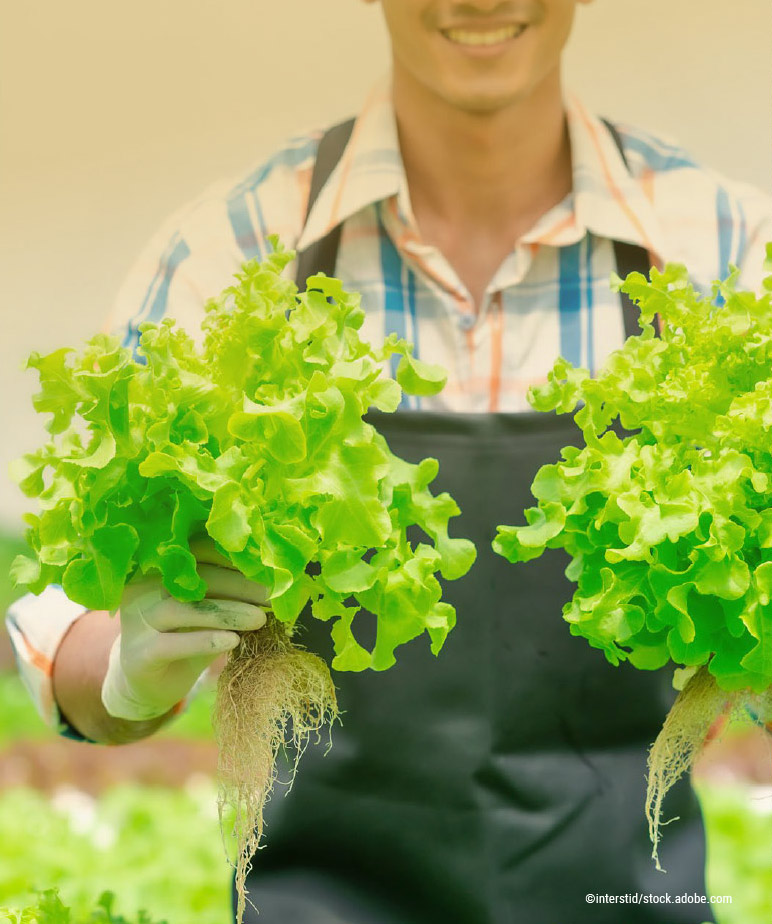
 The Gulf Cooperation Council countries are seeking to increase production within environmental limits, leveraging smart agricultural technologies
to help optimize water use and curtail post-harvest losses. This can ensure year-round yields and help in moving Gulf Cooperation Council economies away from oil and gas. Food production using these technologies is still limited and costly, however. Investments in high-tech greenhouses, vertical farms, hydroponics and other water-conserving methods to produce fruits and vegetables have taken place in Kuwait, Oman and the United Arab Emirates. Kuwait and the United Arab Emirates are conducting advanced research on drought- and saline-tolerant crop varieties.14
The Gulf Cooperation Council countries are seeking to increase production within environmental limits, leveraging smart agricultural technologies
to help optimize water use and curtail post-harvest losses. This can ensure year-round yields and help in moving Gulf Cooperation Council economies away from oil and gas. Food production using these technologies is still limited and costly, however. Investments in high-tech greenhouses, vertical farms, hydroponics and other water-conserving methods to produce fruits and vegetables have taken place in Kuwait, Oman and the United Arab Emirates. Kuwait and the United Arab Emirates are conducting advanced research on drought- and saline-tolerant crop varieties.14
 The Gulf Cooperation Council countries stand out in terms of more advanced nutrition policies to reduce the consumption of sugar, salt and saturated fats, including through taxes and legislation aimed at the reformulation of foods and beverages.
By 2020, all Gulf Cooperation Council countries had introduced taxes on soft drinks and other sugar-sweetened beverages (such as a 50 per cent tax on carbonated drinks and 100 per cent tax on energy drinks), resulting in marked decreases in purchases.15 Qatar has adopted comprehensive policy measures on nutrition policy dietary guidelines, food labelling standards, regulations constraining the marketing of unhealthy foods and beverages to children, and media campaigns and counselling on healthy diets and nutrition.16
The Gulf Cooperation Council countries stand out in terms of more advanced nutrition policies to reduce the consumption of sugar, salt and saturated fats, including through taxes and legislation aimed at the reformulation of foods and beverages.
By 2020, all Gulf Cooperation Council countries had introduced taxes on soft drinks and other sugar-sweetened beverages (such as a 50 per cent tax on carbonated drinks and 100 per cent tax on energy drinks), resulting in marked decreases in purchases.15 Qatar has adopted comprehensive policy measures on nutrition policy dietary guidelines, food labelling standards, regulations constraining the marketing of unhealthy foods and beverages to children, and media campaigns and counselling on healthy diets and nutrition.16
 To guarantee the safety of imported food, Gulf Cooperation Council countries have reformed their food safety laws and adopted advanced food quality control systems while increasing subregional coordination.
The United Arab Emirates was among the early regional adopters of food quality assurance systems such
as hazard analysis and critical control points, and in 2013 developed a cold chain transportation standard.17 Subregional bodies active on these issues include the Gulf Standardization Organization, the Gulf Cooperation Council Committee for Food Safety and the Gulf Rapid Alert System for Food.
To guarantee the safety of imported food, Gulf Cooperation Council countries have reformed their food safety laws and adopted advanced food quality control systems while increasing subregional coordination.
The United Arab Emirates was among the early regional adopters of food quality assurance systems such
as hazard analysis and critical control points, and in 2013 developed a cold chain transportation standard.17 Subregional bodies active on these issues include the Gulf Standardization Organization, the Gulf Cooperation Council Committee for Food Safety and the Gulf Rapid Alert System for Food.
 Middle-income countries are seeking to modernize agriculture through policies to diversify production, keeping sustainability and resilience in mind.
Policies aim to increase contributions to economic development and job creation through high-value, export-oriented agriculture, and frameworks that incentivize private sector investments in agribusinesses and food processing. For example, the Jordan National Food Security Strategy 2021-2030 plans to maximize the potential of local food production by adopting improved agricultural practices and modern technologies for increased productivity and efficient use of limited natural resources. The Morocco Generation Green 2020-2030 is oriented towards creating a new generation of young entrepreneurs in agriculture, such as by connecting 2 million farmers to digital platforms that enable the optimization of irrigation and fertilizer use. Since 2009, the Agricultural and Rural Renewal Programme of Algeria has helped to incentivize farmers and remove barriers to foreign ownership and equipment imports. This has boosted the production of staple and higher-margin crops and reduced dependence on food imports.20
Middle-income countries are seeking to modernize agriculture through policies to diversify production, keeping sustainability and resilience in mind.
Policies aim to increase contributions to economic development and job creation through high-value, export-oriented agriculture, and frameworks that incentivize private sector investments in agribusinesses and food processing. For example, the Jordan National Food Security Strategy 2021-2030 plans to maximize the potential of local food production by adopting improved agricultural practices and modern technologies for increased productivity and efficient use of limited natural resources. The Morocco Generation Green 2020-2030 is oriented towards creating a new generation of young entrepreneurs in agriculture, such as by connecting 2 million farmers to digital platforms that enable the optimization of irrigation and fertilizer use. Since 2009, the Agricultural and Rural Renewal Programme of Algeria has helped to incentivize farmers and remove barriers to foreign ownership and equipment imports. This has boosted the production of staple and higher-margin crops and reduced dependence on food imports.20
 Most middle-income countries continue to support smallholder farmers and cooperatives,
typically with subsidies for agricultural inputs, including seeds, fertilizer, pesticides and animal feed.
Small farmers also benefit from extension services promoting improved, yield-boosting techniques and the production of high-value crops for export.
For example, Algeria increased fertilizer subsidies from 20 to 50 per cent as part of its economic recovery and renewal programme.
21 The Haya Karima (Decent Life) project in Egypt, launched in 2021 to reduce rural poverty, has established agricultural service centres and irrigation expansion projects benefiting small farmers.22
Most middle-income countries continue to support smallholder farmers and cooperatives,
typically with subsidies for agricultural inputs, including seeds, fertilizer, pesticides and animal feed.
Small farmers also benefit from extension services promoting improved, yield-boosting techniques and the production of high-value crops for export.
For example, Algeria increased fertilizer subsidies from 20 to 50 per cent as part of its economic recovery and renewal programme.
21 The Haya Karima (Decent Life) project in Egypt, launched in 2021 to reduce rural poverty, has established agricultural service centres and irrigation expansion projects benefiting small farmers.22
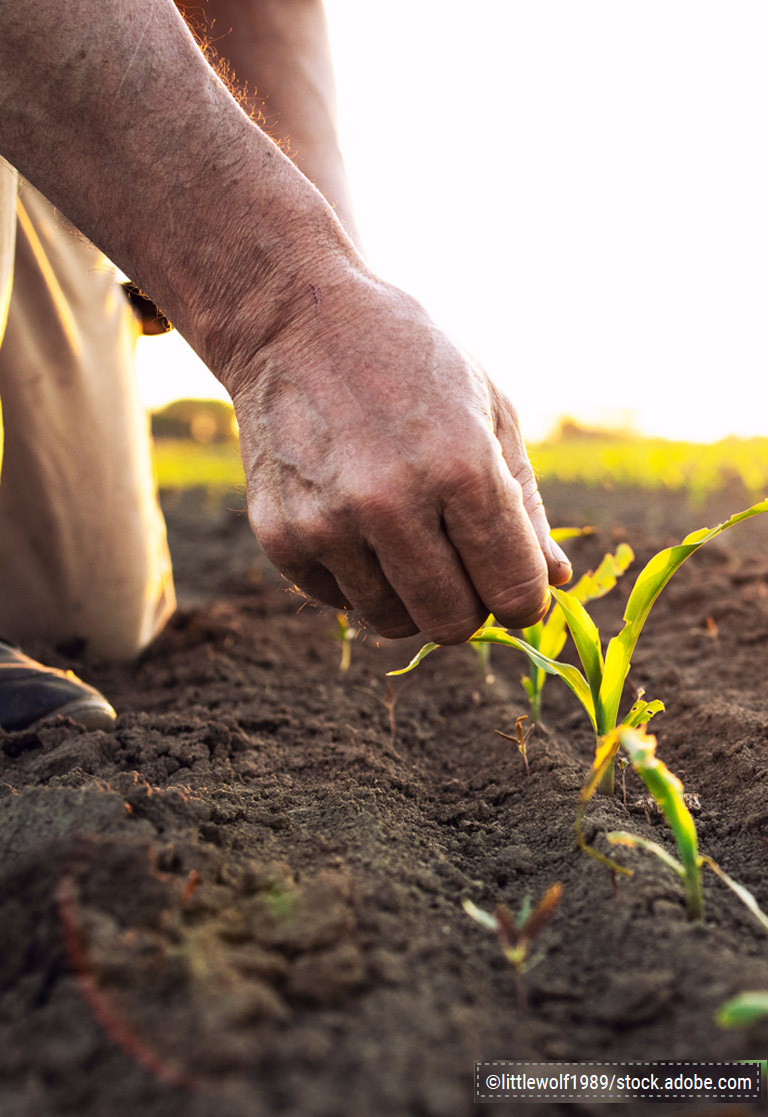
 Improving irrigation water efficiency is a policy priority in several
middle-income countries. Traditionally, the focus has been on increasing supplies, including through water reuse, and reducing wastage,
such as through drip irrigation. Other efforts have emphasized decentralized and inclusive irrigation water management. Some countries have increased irrigation water prices to recover water
provision costs and reflect water scarcity and opportunity costs. Further investments are needed in supplementary irrigation for rain-fed systems, considering the impacts of climate change.
For example, the National Water Plan 2020-2050 in Morocco is a long-term integrated water resource management plan that seeks the rational use of water resources in irrigation.
23 Water users’ associations in Egypt play a major role in decision-making and
have helped optimize the operation of irrigation canals by replacing individual farmer pumping with more efficient collective single-point pumping.
24
The National Plan for Sustainable Agriculture 2022-2025
of Jordan includes projects to improve efficiency in irrigation water use.25
Improving irrigation water efficiency is a policy priority in several
middle-income countries. Traditionally, the focus has been on increasing supplies, including through water reuse, and reducing wastage,
such as through drip irrigation. Other efforts have emphasized decentralized and inclusive irrigation water management. Some countries have increased irrigation water prices to recover water
provision costs and reflect water scarcity and opportunity costs. Further investments are needed in supplementary irrigation for rain-fed systems, considering the impacts of climate change.
For example, the National Water Plan 2020-2050 in Morocco is a long-term integrated water resource management plan that seeks the rational use of water resources in irrigation.
23 Water users’ associations in Egypt play a major role in decision-making and
have helped optimize the operation of irrigation canals by replacing individual farmer pumping with more efficient collective single-point pumping.
24
The National Plan for Sustainable Agriculture 2022-2025
of Jordan includes projects to improve efficiency in irrigation water use.25
 Some middle-income countries have begun to strengthen the
resilience of agricultural systems against climate disasters by incorporating climate-smart irrigation and other measures in their nationally determined contributions. There is still
a gap, however,
in the comprehensiveness of climate resilience strategies and their operationalization through appropriate laws
and institutional changes, such as the creation of dedicated authorities. Insufficient access to finance and
to investments in climate-smart agriculture remains a barrier. In areas with rain-fed agriculture, farmers are left with limited coping options while confronting multiple vulnerabilities.
Tunisia is undertaking Water 2050 prospective studies to assess the impacts of climate change on food security, the results of which will inform the development of the National Plan for the Adaptation of Tunisian Agriculture to Climate Change.26 For an analysis of climate adaptation and disaster risk reduction policies, see the chapters on SDGs 11 and 13.
Some middle-income countries have begun to strengthen the
resilience of agricultural systems against climate disasters by incorporating climate-smart irrigation and other measures in their nationally determined contributions. There is still
a gap, however,
in the comprehensiveness of climate resilience strategies and their operationalization through appropriate laws
and institutional changes, such as the creation of dedicated authorities. Insufficient access to finance and
to investments in climate-smart agriculture remains a barrier. In areas with rain-fed agriculture, farmers are left with limited coping options while confronting multiple vulnerabilities.
Tunisia is undertaking Water 2050 prospective studies to assess the impacts of climate change on food security, the results of which will inform the development of the National Plan for the Adaptation of Tunisian Agriculture to Climate Change.26 For an analysis of climate adaptation and disaster risk reduction policies, see the chapters on SDGs 11 and 13.
 Middle-income countries have policies discouraging unhealthy foods, but implementation issues persist. Awareness lags, particularly in relation to children
and young people, and due to a lack of appropriate labelling and marketing campaigns.
Maghreb
countries have been more successful at curbing obesity among children compared to those in the Mashreq.
National policies discouraging the consumption of foods rich in saturated fatty and trans-fatty acids are in place in Jordan, Morocco and Tunisia.
Morocco has a policy limiting the marketing of unhealthy foods to children and a strategy to combat childhood obesity
27 Both Morocco and Tunisia have a tax on sugar-sweetened beverages.
Middle-income countries have policies discouraging unhealthy foods, but implementation issues persist. Awareness lags, particularly in relation to children
and young people, and due to a lack of appropriate labelling and marketing campaigns.
Maghreb
countries have been more successful at curbing obesity among children compared to those in the Mashreq.
National policies discouraging the consumption of foods rich in saturated fatty and trans-fatty acids are in place in Jordan, Morocco and Tunisia.
Morocco has a policy limiting the marketing of unhealthy foods to children and a strategy to combat childhood obesity
27 Both Morocco and Tunisia have a tax on sugar-sweetened beverages.
 Food security policies in the least developed countries are largely driven by humanitarian aid and fall mostly in the realm of social assistance. They help to meet short-term needs without necessarily resolving structural problems. In Djibouti, for instance, access to food is addressed through the distribution of food and coupons, whereas policies to develop the agriculture sector and improve its resilience to successive drought waves are underdeveloped.
Food security policies in the least developed countries are largely driven by humanitarian aid and fall mostly in the realm of social assistance. They help to meet short-term needs without necessarily resolving structural problems. In Djibouti, for instance, access to food is addressed through the distribution of food and coupons, whereas policies to develop the agriculture sector and improve its resilience to successive drought waves are underdeveloped.
 A few of the least developed countries are elaborating comprehensive policies to develop and modernize agriculture by giving greater consideration to agroclimatic conditions and export opportunities. Where good policies for promoting food security exist, implementation is hampered by poor coordination and limited national capacities. The Comoros recently adopted a value chain and rural agricultural entrepreneurship approach to food security, which constitutes one of the pillars of its Comoros Emerging Plan (Plan Comores Emergent 2020-2030). This policy accompanies the first-ever agricultural investment plan.28 Within the frame of a longer-term vision for poverty reduction, food security and rural development, Mauritania adopted a National Plan for Agricultural Development
(2015-2025)29 with a focus on the intensification and diversification of irrigated agriculture to address declining rainfall. Another priority entails building the capacities of the public service and food producers.
A few of the least developed countries are elaborating comprehensive policies to develop and modernize agriculture by giving greater consideration to agroclimatic conditions and export opportunities. Where good policies for promoting food security exist, implementation is hampered by poor coordination and limited national capacities. The Comoros recently adopted a value chain and rural agricultural entrepreneurship approach to food security, which constitutes one of the pillars of its Comoros Emerging Plan (Plan Comores Emergent 2020-2030). This policy accompanies the first-ever agricultural investment plan.28 Within the frame of a longer-term vision for poverty reduction, food security and rural development, Mauritania adopted a National Plan for Agricultural Development
(2015-2025)29 with a focus on the intensification and diversification of irrigated agriculture to address declining rainfall. Another priority entails building the capacities of the public service and food producers.
 Food security policymaking in countries in conflict is difficult and ineffective due to macro conditions, including weak governance, economic collapse, destruction
of infrastructure and extremely strained government budgets, among others.
A humanitarian-development-peace nexus approach has yet to be put into practice, where food aid is carefully balanced with other forms of assistance, including nutrition education services, support to sustainable and resilient agricultural production, and institutional development. Nutrition policies that encourage consumption of traditional locally produced food are usually effective in such contexts. While humanitarian relief interventions have been instrumental in curbing food insecurity in the short term, they are ineffective in tackling structural problems, as is the case in Yemen.
Food security policymaking in countries in conflict is difficult and ineffective due to macro conditions, including weak governance, economic collapse, destruction
of infrastructure and extremely strained government budgets, among others.
A humanitarian-development-peace nexus approach has yet to be put into practice, where food aid is carefully balanced with other forms of assistance, including nutrition education services, support to sustainable and resilient agricultural production, and institutional development. Nutrition policies that encourage consumption of traditional locally produced food are usually effective in such contexts. While humanitarian relief interventions have been instrumental in curbing food insecurity in the short term, they are ineffective in tackling structural problems, as is the case in Yemen.
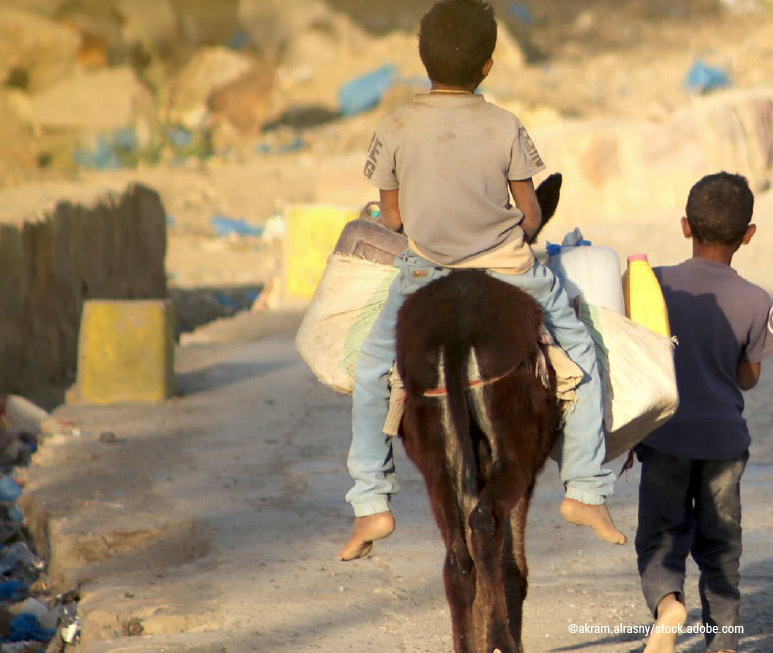
 Donor-funded projects that focus on building adaptive agricultural capacities in conflict contexts are promising.
Countries could gain from scaling them up at the policy level. In conflict situations where market infrastructure falls apart, the focus must shift
towards local production practices necessitating few inputs. While it is hard to innovate and encourage sophisticated technology in conflict situations,
some donor-funded projects have succeeded in enhancing technology use for more resilient food production. In the Sudan, women benefited from an innovative World Food Programme hydroponics project that supported food-insecure communities to grow plants without needing soil or excess water. This helped to address basic needs and improve livelihoods.32
Donor-funded projects that focus on building adaptive agricultural capacities in conflict contexts are promising.
Countries could gain from scaling them up at the policy level. In conflict situations where market infrastructure falls apart, the focus must shift
towards local production practices necessitating few inputs. While it is hard to innovate and encourage sophisticated technology in conflict situations,
some donor-funded projects have succeeded in enhancing technology use for more resilient food production. In the Sudan, women benefited from an innovative World Food Programme hydroponics project that supported food-insecure communities to grow plants without needing soil or excess water. This helped to address basic needs and improve livelihoods.32
 Where food security policies exist, they tend to
mirror conflict-related imbalances and divisions,
and miss opportunities to build social cohesion. In the Syrian Arab Republic,
for instance, the official Government in 2020 produced its post-war strategic vision for 2030,33 connecting a short-term humanitarian perspective and development. The plan makes agriculture a high priority for post-war development, focusing on its potential for boosting economic growth, addressing regional disparities and promoting women’s empowerment. It is unclear, however, if and how the plan would address inequalities, which it acknowledges have fuelled the war.
Where food security policies exist, they tend to
mirror conflict-related imbalances and divisions,
and miss opportunities to build social cohesion. In the Syrian Arab Republic,
for instance, the official Government in 2020 produced its post-war strategic vision for 2030,33 connecting a short-term humanitarian perspective and development. The plan makes agriculture a high priority for post-war development, focusing on its potential for boosting economic growth, addressing regional disparities and promoting women’s empowerment. It is unclear, however, if and how the plan would address inequalities, which it acknowledges have fuelled the war.

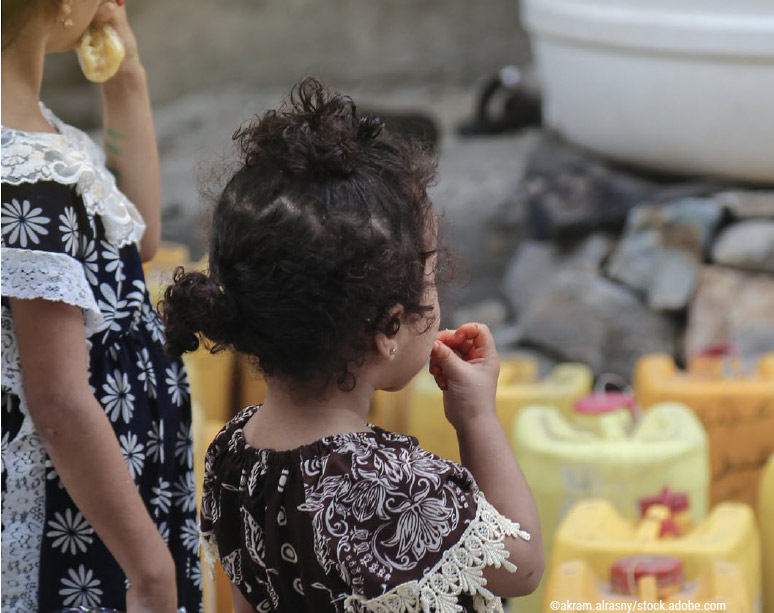
| Small-scale and traditional farmers often lack the economic and technical means to become part of a modernized agriculture sector and value chains. They are typically more vulnerable to climate change as they mostly practice rain-fed agriculture. |
The Green Morocco Plan has an entire pillar aimed at promoting partnerships between smallholder farmers and private sector investors. Smallholders bring land and farming experience while private investors facilitate access to profitable value chains.
In 2019, Saudi Arabia initiated a programme to help small farmers switch to organic farming as part of a goal to bolster organic output by 300 per cent by 2030. In 2019, Tunisia operationalized a fund to compensate farmers for damages caused by natural disasters. The Globally Important Agricultural Heritage Systems designation can help preserve traditional agricultural practices adapted to prevailing climate changes and risks. In 2023, nine designations were registered in five countries: one in Algeria, one in Egypt, three in Morocco, three in Tunisia and one in the United Arab Emirates.a |
|
| Women farmers are at a particular disadvantage due to prevailing discriminatory gender norms. The division of labour in agriculture is unfair to women, who perform the most tedious, labour-intensive tasks. | In Morocco, inheritance laws and customs related to communal lands, termed soulaliyate, have precluded women from owning and controlling these typically agricultural properties. To resolve this situation, Morocco in 2019 adopted law number 62-17 on the management of soulaliyate communal lands. The law grants women and men equal rights in access to this land.b | |
| Children and women have high malnutrition rates. Deficient policies include food subsidies and school feeding programmes that have promoted high-calorie foods, creating a double burden of undernutrition and obesity, particularly among children and women. | The United Arab Emirates launched a National Nutrition Strategy 2022-2030 and associated multidisciplinary National Programme to Combat Obesity in Children and Adolescents. The Ministry of Health and Prevention launched the Mutabah online system to collect data on obesity and extra weight among school students.c | |
| Refugees and internally displaced persons are at an increased risk of food insecurity. They are highly dependent on food aid, and their diets may not meet their full nutritional needs. The food security status of refugees depends on existing national policies in host countries.d |
Lebanon extended social assistance provided through the National Poverty Targeting Program to include food assistance via an electronic food voucher system being implemented by the World Food Programme (WFP) for a segment of Syrian refugees.e
The Policy Framework on Displacement of Somalia requires authorities and other actors to assist and protect internally displaced persons in emergency situations by addressing their needs for food and supporting their voluntary return with a return package that includes food.f |

| Country | Expenditures (dollars) |
Reporting year |
|---|---|---|
| Morocco | 90,000,000 | 2013 |
| Egypt | 55,368,086 | 2020 |
| Tunisia | 26,551,000 | 2020 |
| Iraq | 17,000,000 | 2020 |
| Jordan | 7,060,000 | 2013 |
| Sudan | 4,943,994 | 2020 |
| Djibouti | 959,350 | 2013 |
 Source: United Nations Global SDG Database, accessed on 13 December 2023.
Source: United Nations Global SDG Database, accessed on 13 December 2023.
 Source: ESCWA Arab SDG Monitor, accessed on 21 August 2023.
Source: ESCWA Arab SDG Monitor, accessed on 21 August 2023.| Country | Additional investments to enhance agricultural outputs (billions of dollars) |
Reference document |
|---|---|---|
| Iraq | 63.2 | Iraq Vision 2030 |
| Algeria | 45.5 | Algeria National Vision 2030 |
| Morocco | 43.2 | Morocco Generation Green 2020-2030 |
| Egypt | 18 | Egypt Sustainable Agricultural Development Strategy |
| Oman | 13 | Oman Sustainable Agriculture and Rural Development Strategy towards 2040 |
| Lebanon | 5.5 | Lebanon Agricultural Strategy |
| Tunisia | 4.8 | Tunisia Development Plan |
| Jordan | 0.5 | Jordan Economic Growth Plan |
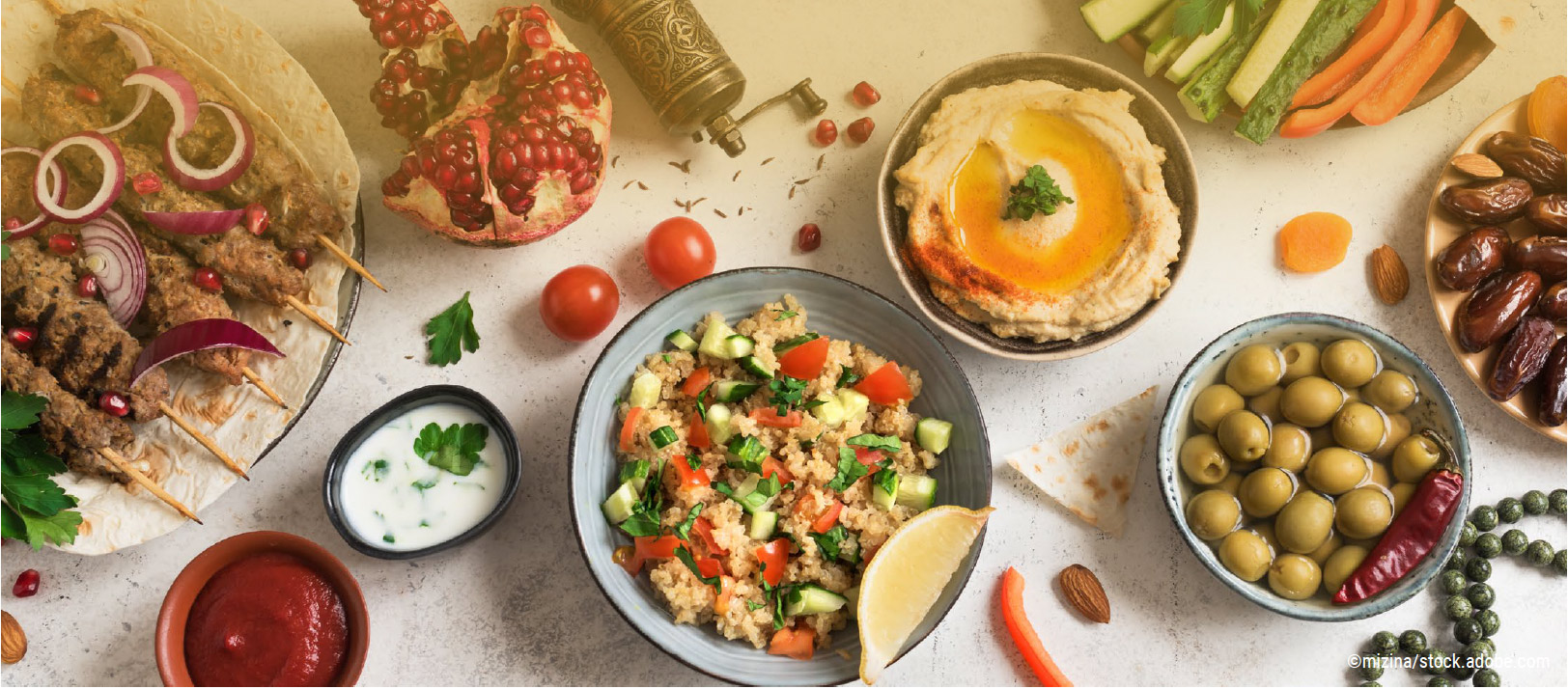


1. Article 25 of the Universal Declaration of Human Rights.
2. See FAO, Right to Food Around the Globe database, accessed on 18 September 2023.
3. Article 79 of the Egyptian Constitution stipulates: “Each citizen has the right to healthy and sufficient food and clean water. The State shall ensure food resources to all citizens. The State shall also ensure sustainable food sovereignty and maintain agricultural biological diversity and types of local plants in order to safeguard the rights of future generations”. Article 80 goes on to specify that “Each child shall have the right to [...] basic nutrition [...]”.
4. The average tariff on imported food in the Near East and North Africa region rose from 13 per cent in 2015 to 32 per cent in 2019 (FAO and others, 2023). The Near East and North Africa region includes Iran.
5. Egypt as an outlier in terms of achieving agricultural productivity growth in the past decade, due to water use improvements and a shift to high-value crops.
6. WFP, 2020.
7. Oxford Business Group, 2022.
8. See more on food security in the United Arab Emirates.
9. Gulf Times, 2018.
10. See Saudi Agricultural and Livestock Investment Company (SALIC) home page.
11. See ADQ’s Food and Agriculture Portfolio.
12. See the National Food Security Strategy 2051 of the United Arab Emirates.
13. See Hassad Food’s “About Us”.
14. Oxford Business Group, 2022.
15. Al-Jawaldeh and Megally, 2021.
16. FAO and others, 2020.
17. Ibid.
18. See World Bank data, Agriculture, forestry, and fishing, value added (% of GDP) – Arab world, accessed on 13 December 2023.
19. Banerjee and others, 2014.
20. See the FAOLEX database on Algeria.
21. Algeria Invest, 2022.
22. Egypt Today, 2023.
23. Moroccan National Portal, 2019.
24. See Egypt: The role of water users’ associations in reforming irrigation, Global Water Partnership.
25. See Jordan, Second Voluntary National Review 2022.
26. See Tunisia, Second Voluntary National Review 2021.
27. See Morocco, Voluntary National Review 2020.
28. See Comoros, Voluntary National Review 2023.
29. See Mauritania’s National Agricultural Development Plan.
30. USAID, 2022.
31. Fathallah, 2020.
32. Popovska, 2019.
33. ESCWA, 2020.
34. Overall, the region is characterized by low public spending on rural infrastructure and services. Spending is as low as one twentieth the equivalent per capita spending in urban areas (FAO, 2020).
35. ESCWA, Pathfinders and WFP, 2023.
36. Rural and urban divides at the Arab regional level are evident in access to water (95 per cent urban versus 80 per cent rural), sanitation (94 per cent urban versus 82 per cent rural) and electricity (98 per cent urban versus 83 per cent rural). See the ESCWA Arab SDG Monitor.
37. ESCWA Arab SDG Monitor, accessed on 21 August 2023.
38. See World Bank data on Food imports (% of merchandise imports) – Arab world, world, accessed on 1 March 2024.
39. WTO, 2018.
40. WFP, 2021.
41. See World Bank data on Agriculture, forestry, and fishing, value added per worker (constant 2015 US$) – Arab world, accessed on 1 March 2024.
42. ESCWA Arab SDG Monitor, accessed on 21 August 2023.
43. Equivalent to about $10.4 billion as per January 2024 exchange rate.
44. See the Main Achievements of the Green Morocco Plan.
45. ESCWA, 2018.
46. ODI and WFP, 2022.
47. See more on the ASEAN Food Security Information System.
48. FAO, 2022.
49. See the Agreement on the ASEAN Food Security Reserve.
Algeria Invest (2022). Food Security: Agricultural Performance Puts Algeria on the Right Track. 17 October.
Al-Jawaldeh, A., and R. Megally (2021). Impact Evaluation of Soft Drink Taxes as Part of Nutrition Policies in Gulf Cooperation Council Countries. F1000Research.
Banerjee, and others (2014). Natural disasters in the Middle East and North Africa: a regional overview. World Bank Group. Working Paper, No. 81658.
Economic and Social Commission for Western Asia (ESCWA) (2018). Policy Briefs on Food Security Issues in the Arab Region.
__________ (2020). The National Development Program for Post-War Syria: Syria Strategic Plan 2030. May 2020.
Economic and Social Commission for Western Asia (ESCWA), Pathfinders, and World Food Programme (WFP) (2023). Inequality in the Arab Region: Food Insecurity Fuels Inequality.
Egypt Today (2023). In Figures: What Did Haya Karima Achieve So Far in Upper Egypt? 20 February.
Fathallah, H. (2020). Iraq’s Governance Crisis and Food Insecurity. Carnegie Endowment for International Peace.
Food and Agriculture Organization of the United Nations (FAO) (2020). Priorities for Food and Agriculture in the Near East and North Africa Region 2020-2030. Background Paper for the Thirty-fifth FAO Regional Conference for the Near East. Cairo.
__________ (2022). Addressing Food Security Challenges Faced by the Near East and North Africa Region Due to the Ukraine Crisis: Regional Overview. Cairo.
Food and Agriculture Organization of the United Nations (FAO), and others (2020). Regional Overview of Food Security and Nutrition in the Near East and North Africa 2019 – Rethinking Food Systems for Healthy Diets and Improved Nutrition.
__________ (2023). Near East and North Africa –Regional Overview of Food Security and Nutrition: Trade as an Enabler for Food Security and Nutrition.
Food and Agriculture Organization of the United Nations (FAO), International Centre for Advanced Mediterranean Agronomic Studies (CIHEAM), and Union for the Mediterranean (UfM) (2021). Food Systems Transformation – Processes and Pathways in the Mediterranean: A Stocktaking Exercise. Rome: FAO.
Gulf Times (2018). New Inventory Management System Launched. 14 June.
Moroccan National Portal (2019). Head of Government: 2020-2050 National Water Plan, Roadmap to Face Challenges for Next 30 Years. 25 December 2019.
Overseas Development Institute (ODI), and WFP (2022). Anticipatory Action in the MENA Region: State of Play and Accelerating Action.
Oxford Business Group (2022). Agri-tech and Food Security in the GCC: COVID-19 Response Report.
Popovska, B. (2019). Growing Plants Without Soil in Sudan. 22 July. Rome: WFP.
The United Arab Emirates, Ministry of Health and Prevention (2022). MoHAP to Develop New Plan for the National Programme to Combat Obesity in Children and Adolescents. 6 April.
United States Agency for International Development (USAID) (2022). West Bank and Gaza – Complex Emergency. Fact Sheet #3, fiscal year 2022.
World Food Programme (WFP) (2020). State of School Feeding Worldwide 2020. Rome: WFP.
__________ (2021). Debt-for-Food Swaps. Debt Swap Task Force.
World Trade Organization (WTO) (2018). Trade Policy Review: Report by the Secretariat – Egypt.